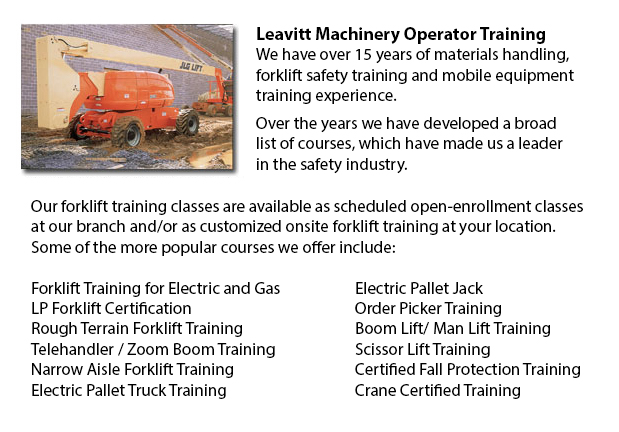
Aerial Lift Certification Markham - Aerial Lift Certification is for workers who need a thorough knowledge of aerial lift safety. Supervisors, maintenance workers and construction craftsmen require this training to ensure that operators and inspectors are qualified. Federal, provincial and state regulations require companies to be certified in order to do in-house aerial lift inspections.
Nearly all workers who are needed to perform tasks at elevated level would normally use the same means to get to these desired heights, regardless of the type of work that must be performed. Scissor lifts and aerial lifts are the mechanized machines utilized in order to lift employees and equipment to elevated places.
Bucket trucks referred to as Cherry Pickers are aerial platforms which feature a supported boom and bucket. The main danger to using this type of platform is normally tip-overs, falls and electrocutions. Certification guarantees that workers who use aerial lifts are trained correctly to be able to operate the equipment safely. Training also makes sure that workers know how to maintain aerial work platforms based on the manufacturer's instructions.
Aerial lift training certification programs would comprise the following: Aerial lifts that are mounted to vehicles, Boom-supported aerial lifts and scissors lifts. Trainees will know about safe operating procedures and would gain knowledge about the hazards which normally lead to aerial lift incidents. They would be technically competent in the various types of aerial lifts, in addition to parts and terms. From choosing the right aerial lift for the task to interpreting rated capacity charts, the certification program will provide employees with all that they have to know to do their work safely.
Supervisors and inspectors who have the task to check aerial lift devices must know how to inspect gears, booms, structural parts, operating mechanisms, control systems and functions, power plants, braking systems, shafts and pins, attachments, electric and pneumatic parts, hydraulic, emergency safety devices and operator aids, and all that. Training would consist of the following: the inspector's role in lessening accidents and liability exposure; how to perform a pre-use, monthly and annual inspection; how to apply and interpret regulations about aerial lift safety standards; how to write inspection reports; techniques and checklists; inspection procedures; following record keeping requirements; applying and understanding the three levels of aerial lift inspection; and when to remove aerial lifts from service if they are defective.
-
Crane / Overhead Crane / Self-Erect Crane / Truck Mounted Crane / Hydraulic Cranes Training in Markham
Bridge cranes or overhead cranes are a kind of industrial material handling crane making use of a hook and line apparatus that runs on a horizontal beam running along two widely separated rails. Many overhead cranes could be seen inside a long factor... More -
Manlift Ticket Markham
Manlift Ticket Markham - The Manlifts and Elevated Platforms program provides training on the regulations, rules and correct application of safe operating procedures and work practices involved in everyday activities for individuals who work with thi... More -
Aerial Lift Train the Trainer Markham
Aerial Lift Train the Trainer Markham - The Aerial Lifts Train the Trainer Certification Program will teach trainers how to effectively train operators in safe industrial mobile equipment operation. Trainers are given in-depth instruction on aerial l... More -
Loader Operator Training Markham
Loader Operator Training Markham - Loader Operator Training - Within North America, lift truck operator training is required to be able to prevent workplace injuries and accidents. Certain forklift training would be provided to be able to offer forkl... More -
Aerial Boom Lift Ticket Markham
Aerial Boom Lift Ticket Markham - Aerial lift trucks can be used to accomplish many unique duties done in hard to reach aerial spaces. A few of the duties associated with this style of jack include performing daily repair on buildings with high ceili... More -
Boom Lift Operator Training Markham
Boom Lift Operator Training Markham - The cherry picker work platform is a type of work platform, that will usually have a bucket or platform at the hydraulic lifting system's end. The machine is likewise called a boom lift, man lift, hydraladder or... More -
Boom Lift License Markham
Boom Lift License Markham - Just fully qualified individuals must operate an aerial boom lift. Qualification can be obtained through a combination of classroom sessions and practical training with the particular kind of aerial lift that will be used... More -
Telehandler Training Courses Markham
Telehandler Training Courses Markham - The employer has the responsibility to make certain that their workers are trained to work proficiently with telehandler machines. The staff have to be assessed for their skill to utilize the equipment. If defic... More

Forklift Training Markham
TOLL FREE: 1-888-254-6157
Markham, Ontario
forklifttrainingmarkham.com
Email Us
About Us


